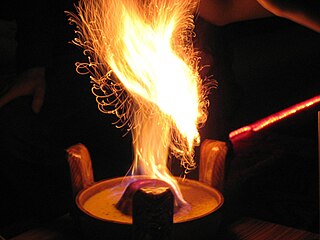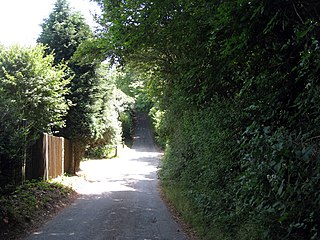
Halle Maria Berry is an American actress. She began her career as a model and entered several beauty contests, finishing as the first runner-up in the Miss USA pageant and coming in sixth in the Miss World 1986. Her breakthrough film role was in the romantic comedy Boomerang (1992), alongside Eddie Murphy, which led to roles in The Flintstones (1994) and Bulworth (1998) as well as the television film Introducing Dorothy Dandridge (1999), for which she won a Primetime Emmy Award and a Golden Globe Award.

Mount Baker, also known as Koma Kulshan or simply Kulshan, is a 10,781 ft (3,286 m) active glacier-covered andesitic stratovolcano in the Cascade Volcanic Arc and the North Cascades of Washington in the United States. Mount Baker has the second-most thermally active crater in the Cascade Range after Mount St. Helens. About 30 miles (48 km) due east of the city of Bellingham, Whatcom County, Mount Baker is the youngest volcano in the Mount Baker volcanic field. While volcanism has persisted here for some 1.5 million years, the current volcanic cone is likely no more than 140,000 years old, and possibly no older than 80–90,000 years. Older volcanic edifices have mostly eroded away due to glaciation.

Charles Edward Anderson Berry was an American singer, guitarist and songwriter who pioneered rock and roll. Nicknamed the "Father of Rock and Roll", he refined and developed rhythm and blues into the major elements that made rock and roll distinctive with songs such as "Maybellene" (1955), "Roll Over Beethoven" (1956), "Rock and Roll Music" (1957) and "Johnny B. Goode" (1958). Writing lyrics that focused on teen life and consumerism, and developing a music style that included guitar solos and showmanship, Berry was a major influence on subsequent rock music.

Meteor Crater or Barringer Crater is an impact crater about 37 mi (60 km) east of Flagstaff and 18 mi (29 km) west of Winslow in the desert of northern Arizona, United States. The site had several earlier names, and fragments of the meteorite are officially called the Canyon Diablo Meteorite, after the adjacent Canyon Diablo.

The Chicxulub crater is an impact crater buried underneath the Yucatán Peninsula in Mexico. Its center is offshore, but the crater is named after the onshore community of Chicxulub Pueblo. It was formed slightly over 66 million years ago when a large asteroid, about ten kilometers in diameter, struck Earth. The crater is estimated to be 180 kilometers in diameter and 20 kilometers in depth. It is the second largest confirmed impact structure on Earth, and the only one whose peak ring is intact and directly accessible for scientific research.

The Fra Mauro formation is a formation on the near side of Earth's Moon that served as the landing site for the American Apollo 14 mission in 1971. It is named after the 80-kilometer-diameter crater Fra Mauro, located within it. The formation, as well as Fra Mauro crater, take their names from a 15th-century Italian monk and mapmaker of the same name. Apollo 13 was originally scheduled to land in the Fra Mauro highlands, but was unable due to an in-flight technical failure.

Eagle is a 22-metre long impact crater located on the Meridiani Planum extraterrestrial plain, situated within the Margaritifer Sinus quadrangle (MC-19) portion of the planet Mars. The Opportunity rover came to rest inside Eagle crater when it landed in 2004. Scientists were delighted that the rover landed there, as the crater contains rocky outcroppings that helped prove that Meridiani was once an ocean floor.

The far side of the Moon is the lunar hemisphere that always faces away from Earth, opposite to the near side, because of synchronous rotation in the Moon's orbit. Compared to the near side, the far side's terrain is rugged, with a multitude of impact craters and relatively few flat and dark lunar maria ("seas"), giving it an appearance closer to other barren places in the Solar System such as Mercury and Callisto. It has one of the largest craters in the Solar System, the South Pole–Aitken basin. The hemisphere has sometimes been called the "dark side of the Moon", where "dark" means "unknown" instead of "lacking sunlight" – each side of the Moon experiences two weeks of sunlight while the opposite side experiences two weeks of night.

Lunar craters are impact craters on Earth's Moon. The Moon's surface has many craters, all of which were formed by impacts. The International Astronomical Union currently recognizes 9,137 craters, of which 1,675 have been dated.

Molière is an impact crater on the planet Mercury, 139 kilometers in diameter. It is located south of the crater Rodin, southeast of the crater Abu Nuwas, and northeast of the crater Asvaghosa. The nearly circular rim of the crater is cut off into a flat edge on its southern and southwestern ends, and on its eastern side the rim is indented by a smaller crater. The crater is named for the 17th-century French dramatist and satirist Molière. The name was approved by the International Astronomical Union in 1976.

Sinan is an impact crater on the planet Mercury, 134 kilometers in diameter. It is located northeast of the crater Yeats and southeast of the crater Li Po. It has one craterlet on the south-southwestern side of the crater floor, and it has a symmetrical pit slightly west of the center. Together with a smaller unnamed crater on its southern border, the crater Sinan forms a shape similar to that of the spade found in card games. The crater is named after Mimar Sinan, a 16th-century Turkish architect. The name was adopted by the International Astronomical Union in 1976.

Jezero is a crater on Mars in the Syrtis Major quadrangle, about 45.0 km (28.0 mi) in diameter. Thought to have once been flooded with water, the crater contains a fan-delta deposit rich in clays. The lake in the crater was present when valley networks were forming on Mars. Besides having a delta, the crater shows point bars and inverted channels. From a study of the delta and channels, it was concluded that the lake inside the crater probably formed during a period in which there was continual surface runoff.

Flaming volcano is a large tropical group cocktail typically made with rum, brandy, pineapple juice, orange juice, and orgeat syrup. Many variations exist, and the cocktail in the 21st century is more about the presentation than an adherence to a set list of ingredients. It is usually a multi-user drink, served to a group in a special vessel known as a volcano bowl, which is a decorative ceramic bowl designed with a rising central hub feature resembling a volcanic cone. The cone includes a "crater" reservoir which can be partially filled with rum or another flammable liquor. The crater liquor is carefully ignited when serving, creating a mild volcanic ambiance with its central blue flame.

Berry's Green a small hamlet in the London Borough of Bromley in Greater London, UK, situated outside of London's contiguous built-up area. It is a fairly wooded rural area with a scattering of farmland. Housing consists mainly of detached properties, mostly bungalows, with a row of local authority cottages and a static mobile home site. It is part of the largest ward in Greater London, Darwin (ward), which covers a very rural area, including Downe, Cudham, Leaves Green, Single Street, Luxted, and Westerham Hill.

Hemingway is a crater on Mercury. It has a patch of very dark material located near its center. The dark color is likely due to rocks that have a different mineralogical composition from that of the surrounding surface.

Firsoff is an impact crater in the region called Meridiani Planum in the Oxia Palus quadrangle of Mars, located at 2.66°N latitude and 9.42°W longitude. It is 90 km in diameter. It was named after British astronomer Axel Firsoff, and the name was approved in 2010.

David Berry is an Australian-Canadian actor known for his role as James Bligh in the television series A Place To Call Home and Lord John Grey in the Starz television series Outlander.

Anguissola is a crater on Mercury. It has a diameter of 35.41 kilometres. Its name was adopted by the International Astronomical Union (IAU) on August 4, 2017. Anguissola is named for the Italian painter Sofonisba Anguissola.

Mendelssohn is a crater on Mercury. Its name was adopted by the International Astronomical Union (IAU) on April 24, 2012. Mendelssohn is named for the German composer Jakob Ludwig Felix Mendelssohn.




















